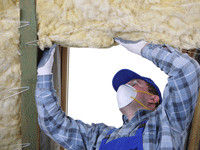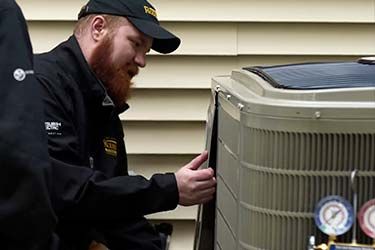



Using the fall months to verify that your insulation is adequate for the upcoming winter will help you cut energy bills and avoid serious problems the cold can create. You can check the insulation levels in your home by checking the level in the attic, the walls and the basement ceiling, and adding more if it's necessary.

The Department of Energy recommends at least 13 inches of batt or blown-in insulation in the attic - and 16 inches for the most protection from heat transfer. As you inspect the attic, look in the corners and around the attic vents to find places where the insulating products are thinner and could cause heat to radiate into the attic and form ice dams on your roof after a snowfall.
The levels in your walls affect your home's comfort level, which you can check by taking off an electrical face plate and looking inside an exterior wall. For safety purposes, you should turn off the circuit breaker for that particular outlet.
Another way to check the walls is to ask an energy auditor or HVAC contractor who uses thermographic equipment to measure the thermal differences along your exterior walls. This equipment shows temperature differences as distinct colors. The easiest way to improve the insulating value of your walls is to use blown-in or expanding foam, both of which a contractor can do for you. Increasing it will help avoid frozen pipes during very cold weather.
If your basement ceiling joists are visible, you'll see any insulating materials. If not, you might be able to check them by removing a ceiling light fixture. Batt insulating rolls can be stapled to the joists and they come in varying widths to tuck tightly between the joists. If you do add it to the basement ceiling, you might insulate any exposed plumbing pipes, since the batts will block heat transfer from your first level to the basement.
If you'd like more information on increasing the insulation in your home, contact Rodenhiser Plumbing, Heating & Air Conditioning. We've provided outstanding HVAC services for the Route 495/128 area of Medway MA since 1928.
Image via Shutterstock.com





Both Alex and Patrick were knowledgeable, courteous, and professional. They made a change that might have solved the recent problem and have structured a more complete solution. We agreed to this...
Mike was thorough, thoughtful and considerate. Covered their shoes before entering, surveyed my issue and provided an explanation of the services and costs. Great Job!
Alex did a great job providing an explanation of the services provided and went out of his way to offer assistance/advice on other issues outside of our scheduled maintenance visit.
Brian did an excellent job inspecting our 18-year old boiler and replacing some of the accessory hardware that needed it, he also adjusted the outgoing hot water settings for our radiators and...
Rodenhiser is my one stop shop!!! They take care of my HVAC, electrical, and plumbing issues & are always helpful addressing any questions I may have about the systems in my house! Everyone...
Chris G. and Nick V. showed up bright and early at 8am to fix my water heater issue. They were on time, polite and were able to fix an issue that has been plaguing my house for a good year. They...
When you are looking for plumbing, electrical, heating or air conditioning in the Route 495 / 128 area, you will be delighted that you called Medway MA' trusted choice since 1928.
With a total dedication to professional workmanship and excellent service, discover why families and businesses continue to trust Rodenhiser after generations of service







